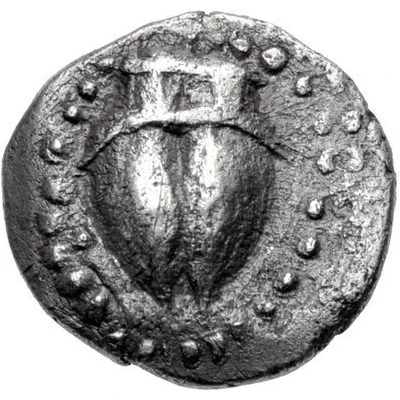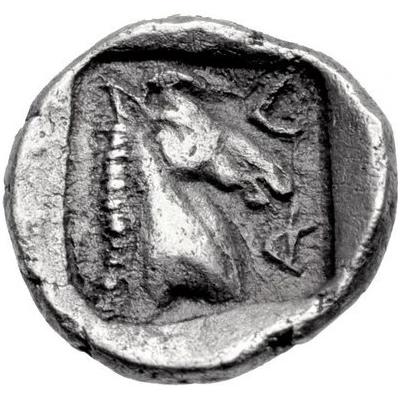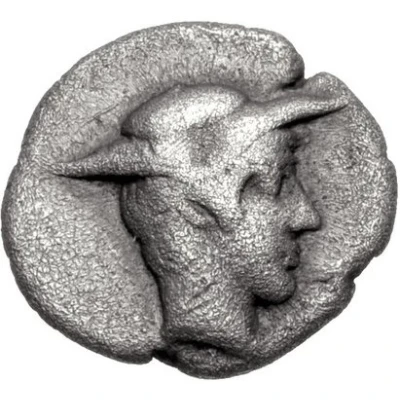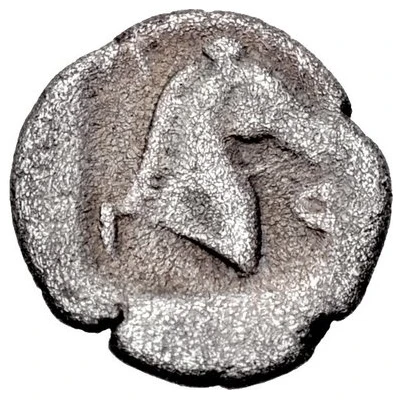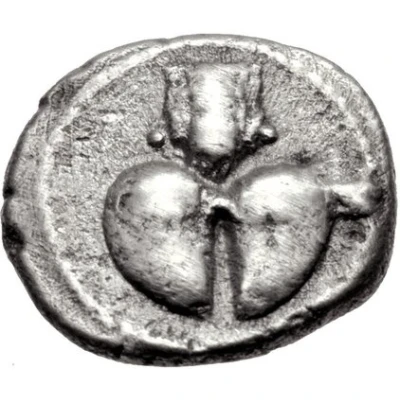
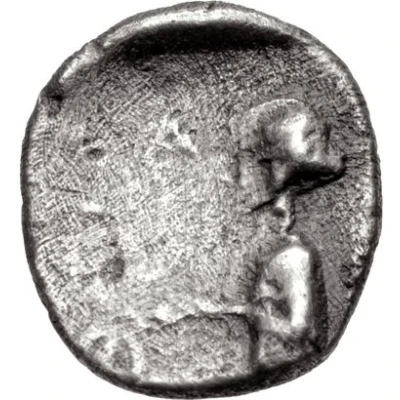

© Classical Numismatic Group, Inc.
Hemiobol 460 BC - 440 BC
| Silver | 0.5 g | 9 mm |
| Issuer | Larissa (Thessaly) |
|---|---|
| Type | Standard circulation coin |
| Years | 460 BC - 440 BC |
| Value | Hemiobol (1⁄12) |
| Currency | Drachm |
| Composition | Silver |
| Weight | 0.5 g |
| Diameter | 9 mm |
| Shape | Round (irregular) |
| Technique | Hammered |
| Demonetized | Yes |
| Updated | 2024-10-10 |
| Numista | N#285467 |
|---|---|
| Rarity index | 100% |
Reverse
Nymph Larissa to left, depicted from the waist upwards, her hair in a bun at the back of her head, holding a ball (?) in her left hand; ΙΡΑ-Λ, the Ρ upside down and the Ι down to l. sideways.
Script: Greek
Lettering: ΙΡΑΛ
Interesting fact
The Hemiobol coin was used as a form of currency in ancient Greece, specifically in the city-state of Larissa (Thessaly) during the 5th century BC. The coin's name "Hemiobol" comes from the Greek words "hēmi-" meaning "half" and "bolos" meaning "throw", which refers to the coin's value being equal to half the value of a full "bolos" coin. Despite its small value, the Hemiobol was widely used in trade and commerce, and its design featured an image of the mythical creature, the Griffin, on one side and a flower on the other.
